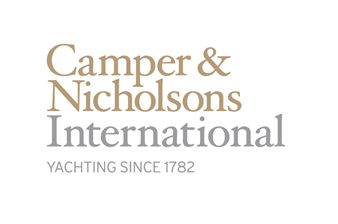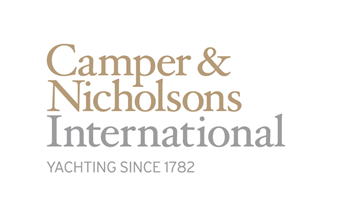Title Page
-
Yacht
-
Conducted on
-
Prepared by
-
Location
-
Chief/Senior engineer
-
How do the engineers access the Mini ISM & templates?
-
Are the pre departure& arrival checklists in use, is this correctly recorded in the logbook?
Standing orders
-
Are the chief engineers standing orders covering the items required in the SMS?
-
Have all the engineering staff signed these?
Permit to work
-
Is the permit to work system implemented in the engineering department?
-
Are risk assessments consulted when opening the permit to work?
-
Are permits correctly closed out on completion and filed?
Planned Maintenance System (PMS)
-
What planned maintenance system is used onboard?
-
Are the job cards sufficiently detailed?
-
Do service schedules for fire fighting & life saving equipment follow flag requirements?
-
Are there sufficient manufacturer equipment manuals available?
-
Are comments added to the system once maintenance is completed for future reference?
-
Are reports by service companies retained on file?
-
Is regular oil analysis undertaken for engines, prop shafts, thrusters, stabilisers, hydraulic systems etc., are they acted upon?
Ballast water treatment
-
Applies?
-
Is the ballast water plan approved?
-
Can the engineer explain system operation?
-
Are records correctly maintained?
MARPOL Annex 1 - Oil pollution prevention
-
Is the location of the SOPEP (or oil management plan known?)
-
Are they familiar with pollution prevention procedures?
-
400GT+ If the yacht can operate in US waters can they locate the NTVRP manual?
Oil record book
-
Is the ORB correctly filled out (no empty lines, each page signed by captain, instructions for completion followed)?
-
Refer to the guidance in the front of the ORB for recommended template
-
Is the weekly retained on board (C11.1) record present?
-
Documented evidence for landing sludge, oily rags or fuel oil?
-
Fuel specification and MSDS held for all fuels bunkered?
Oily water seperator
-
Does the yacht have an oily water seperator?
-
Are the engineers familiar with it's operation?
-
Is the standard operating procedure for testing/operation posted with the OWS?
-
Is the overboard discharge valve secured/locked and a discharge of oil prohibited sign posted up?
-
Is the 15 ppm detection cell replaced/calibrated in accordance with manufacturer instructions?
-
Does the 3 way valve operate correctly and the alarm sound in the engine room when the 15 ppm sensor is activated?
-
Is there adequate capacity available in the holding tank?
MARPOL Annex 4 - Sewage pollution prevention
-
Is the sewage system operating correctly?
-
If there is a means to discharge directly overboard?
-
If untreated sewage is discharged are records of time/position of starting & stopping kept in the log?
MARPOL Annex 6 - Air pollution prevention
-
Are any ozone depleting substances (ODS) listed on the IAPP certificate record?
-
Is a record of topping up/loss of ODS maintained? (fridge log book)
-
Are any engineering staff trained to work on fridge systems?
Fuel
-
Which type of gasoil is used onboard?
-
Does the fuel match the engine manufacturer specification?
-
Is the fuel specification obtained before bunkering?
-
Is the bunker delivery note (BDN) retained for 3 years?
-
Is the sulfur content and flash point adequate (0.1% and 60 degrees +)
-
Is the correct bunker checklist used and a copy retained for each bunkering?
-
For US waters bunker procedure in accordance with CFR 155 sub part C is onboard with letter of authority?
-
Have any letters of protest regarding fuel quality been issued?
NOx emissions reduction (Applies to all engines 130 kW+
-
Record of parts affecting emissions held?
-
Techincal files for each engine over 130 kW are available?
400GT+ SEEMP
-
Applies?
-
What energy saving measures have been implemented since last audit?
-
Can the crew involved explain the aim of the plan (monitoring/goals/self evaluation/review)?
-
Are records maintained correctly (in metric tonnes/kW etc.)
General
-
Engine room and technical spaces are maintained in a clean condition?
-
Are rags correctly stowed in non combustible bins?
-
Is all equipment operational?
-
Is the lighting adequate and are emergency lights OK?
-
Is escape route & safety equipment signage in place?
-
Can the engineers demonstrate how to start the emergency generator?
-
Is storage of chemicals, oils and equipment safe and secure?
-
Are SOP's posted as required by the SMS?
-
Are the engineers aware of their muster list duties?
-
Can the engineers explain the machinery space isolation (vent, QCV, CO2 or sprinkler) release?
-
Is the permit to work system followed (General, confined space, diving, electrical works)
Confined/enclosed spaces
-
Has the yacht done a risk assessment to identify confined spaces which will only be entered with the assistance of outside contractors (gas free, atmosphere testing, access & rescue)
-
Yachts under 500 GT are not required to carry atmosphere monitoring equipment but confined/enclosed space drills do apply, to avoid these a risk assessment can be done to identify confined/enclosed spaces & state these will only be done with outside assistance. Otherwise carriage of atmosphere testing equipment is recommended.
-
Can the engineers identify the designated confined/enclosed spaces and explain safety procedure for entry?
-
Is there an ATEX appoved gas meter available?
-
Is the gas detector provided with remote sensing hose and appropriate onboard/ashore calibration equipment?
-
Can the engineers demonstrate how to use the gas detector?
-
Is confined space rescue equipment provided onboard, do the crew know how to use it?
Summary
-
undefined
-
Signed















